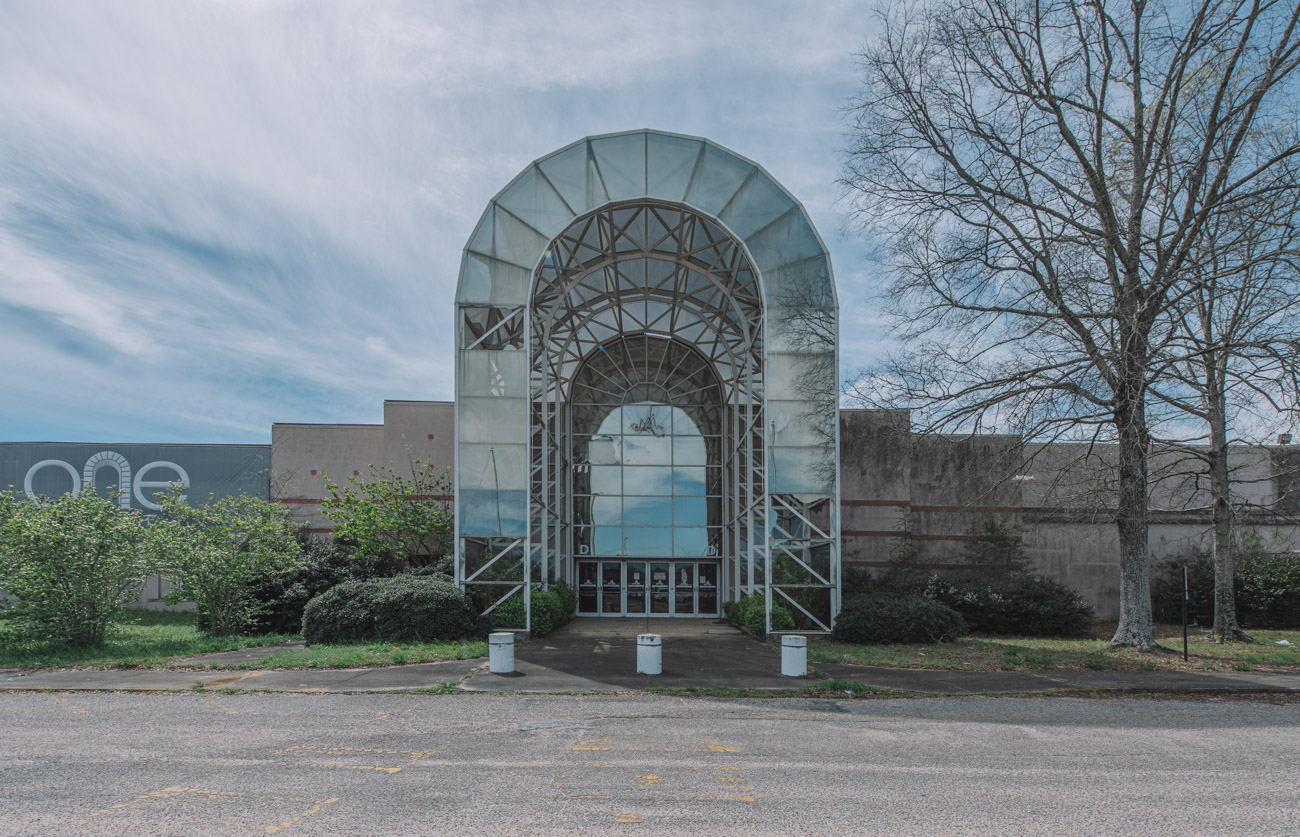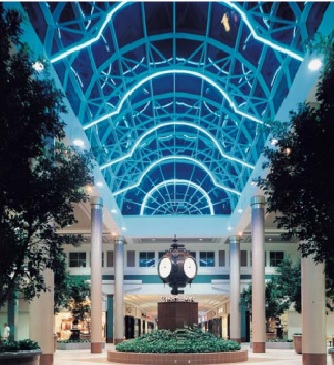| City/Town: • Montgomery |
| Location Class: • Commercial |
| Built: • 1968 | Abandoned: • 2008 |
| Status: • Abandoned |
| Photojournalist: • David Bulit |
Table of Contents
History of Montgomery Mall
Montgomery Mall, located in Montgomery, Alabama, was a spacious enclosed regional shopping center spanning 700,000 square feet and occupying a single level. Its origins trace back to 1963 when W. L. Holcomb and Associates, based in Gulfport, Mississippi, secured a contract to develop a remarkable shopping complex worth $7.5 million. The project was set to take place on a 40-acre plot of land owned by E. P. Magnum.
Initially, the ambitious plan involved constructing a massive regional center on 90 acres of a 350-acre tract situated east of Woodley Road. The envisioned retail hub, with Montgomery Fair as its primary tenant, was slated to open its doors in 1965. However, when the zoning plan was presented to the City Commission for approval in August 1963, the tract faced opposition. Downtown merchants and some residents from Woodley Park, Gladlane Estates, Elmsmeade, and Gay Meadows exerted pressure on the commissioners, leading them to reject the commercial classification of the area as per the newly adopted zoning ordinance.
Montgomery Mall had been designed to become the largest shopping center in the vicinity, drawing inspiration from the successful Edgewater Plaza Shopping City in Gulfport, also developed by Holcomb. it featured two anchor stores; Montgomery Fair and JCPenney.
In early 1965, Montgomery Fair made an announcement that it would occupy new facilities spanning 171,000 square feet at the current site of the mall. S. E. Maxwell, the president of Montgomery Fair, revealed that the company intended to leave the Court Street store it had occupied for two decades. While Montgomery Fair’s relocation plans progressed smoothly, the situation was far from ideal for Holcomb. They found themselves short on funds to compensate the general contractor, engineering firms, and architectural firms involved in constructing the Montgomery Fair store.

Lawsuit and Change in Ownership of Montgomery Mall
Legal action ensued as the general contractor, Daniel Construction, Inc., filed a lawsuit against Holcomb seeking $2.9 million, while the engineering firm of Barnard and Burk of MS. claimed $212,000, and architects August Perez and Associates sought $9,500. By the end of 1965, Holcomb was placed under receivership, and Anglo-American Properties, Inc. assumed responsibility for the company’s outstanding debts. U.S. District Judge Frank M. Johnson, Jr. issued a court order stipulating that Anglo-Americans had six months to settle their debts. If the payment was not made within the given timeframe, Daniel Construction would take ownership of the building.
In mid-1966, Judge Johnson issued an order for the public auction of the property, excluding the Montgomery Fair establishment, to settle the outstanding $3 million debts owed by the Mississippi contractor, Daniel Construction.
The contractor placed a bid of $2.5 million to secure a long-term lease on the property, which encompassed approximately 68 acres of land leased by Holcomb for a period of 90 years. Subsequently, in October 1966, the City Planning Commission granted approval for a rezoning petition, enabling the shopping center’s planners to commence construction, initially projected to begin in January 1967. However, due to various factors inherent in the construction industry, the final opening of the shopping center faced delays, and it was not until 1970 that the center was eventually ready for operation.

1970 Grand Opening
In April 1970, Montgomery Mall celebrated its official opening, presenting customers with a fully enclosed and air-conditioned shopping destination designed for their convenience. J. C. Penney’s and Montgomery Fair department stores served as prominent anchors at opposite ends of the shopping center. However, at the time of the grand opening, only 16 of the projected 50 stores were prepared to welcome customers.
Beyond the beautifully landscaped and enclosed area adorned with a grand fountain, comfortable rest areas, and soothing background music, additional features included a supermarket, J. C. Penney’s auto center, and the Montgomery Mall UltraVision theater, which operated in a separate building on the 50-acre site. Accommodating over 3,500 vehicles, the parking lot offered ample space for visitors.
At the time, the mall’s other major tenants included Lerner Shops, Singer Sewing Center, V. J. Elmore Variety Store, Hardy Shoes, Butler Shoes, Schwobilt Clothes, Renfroe’s Shoppe, Memory Lane Card Shop, Edison Brothers Shoes, and Morrison’s Cafeteria. In that same year, the Montgomery Fair department store underwent a change in ownership and was rebranded as Gayfers. A significant expansion of the mall took place between 1987 and 1988, resulting in the addition of a third wing anchored by Parisian, a renowned department store based in Birmingham.
This expansion was needed in order to compete with Eastdale Mall which opened in 1977. Eastdale Mall contained Gayfers, Sears, Parisian, and Pizitz, which by 1988 had converted to McRae’s. Despite the overlap in stores, both continued to thrive for the next couple of decades. Unlike Eastdale Mall, the Normandale Shopping Center, located just four miles away, and Montgomery Mall complemented each other as shoppers could find entirely different offerings at the two malls.
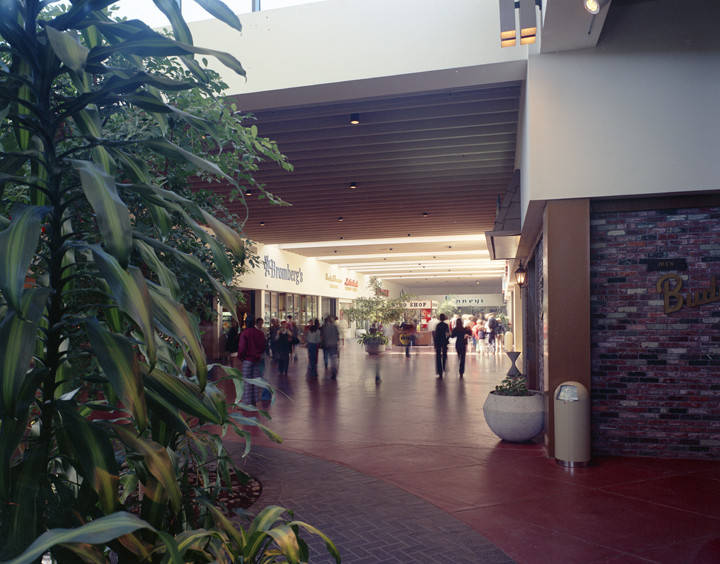

Decline and Closure
In 1998, Glimcher Realty Trust, a real estate investment trust specializing in shopping malls, acquired Montgomery Mall for a sum of $70 million. At the time of the purchase, the mall boasted an impressive 95% occupancy rate, with over 100 tenants contributing to its thriving atmosphere. However, as the early 2000s approached, the rise of online shopping began to impact retail shopping centers nationwide, leading to a decline in their popularity. Montgomery Mall was not exempt from this trend, and various stores, including Gap, Eddie Bauer, American Eagle Outfitters, and Ruby Tuesday, started to shutter their doors.
In March 2004, Piccadilly Cafeteria, which had a location at Montgomery Mall, also closed down. Another Piccadilly Cafeteria situated in the nearby Eastdale Mall had closed earlier in the same year. Both J.C. Penney and Dillard’s, which had acquired the Gayfers chain in 1998, decided to close their stores at Montgomery Mall in 2005. J.C. Penney relocated to a new store at Eastdale Mall, while Dillard’s found a new home at The Shoppes at Eastchase. Unfortunately, Glimcher Realty made minimal efforts to attract new businesses and customers to Montgomery Mall, contributing to its ongoing challenges.
Although Steve & Barry’s University Sportswear replaced the former Dilliard’s in 2005, Parisian closed the following year, as did several other stores. In 2007, Mayor Bobby Bright blamed Glimcher for running the mall into the ground, criticizing them for using the mall for a tax write-off, and said that they “never showed willingness” to improve it. Glimcher sold the mall in May 2007 for $4.4 million. Steve & Barry’s remained until September 2008 when they filed for Chapter 11 bankruptcy reorganization, which later converted to a Chapter 7 liquidation.
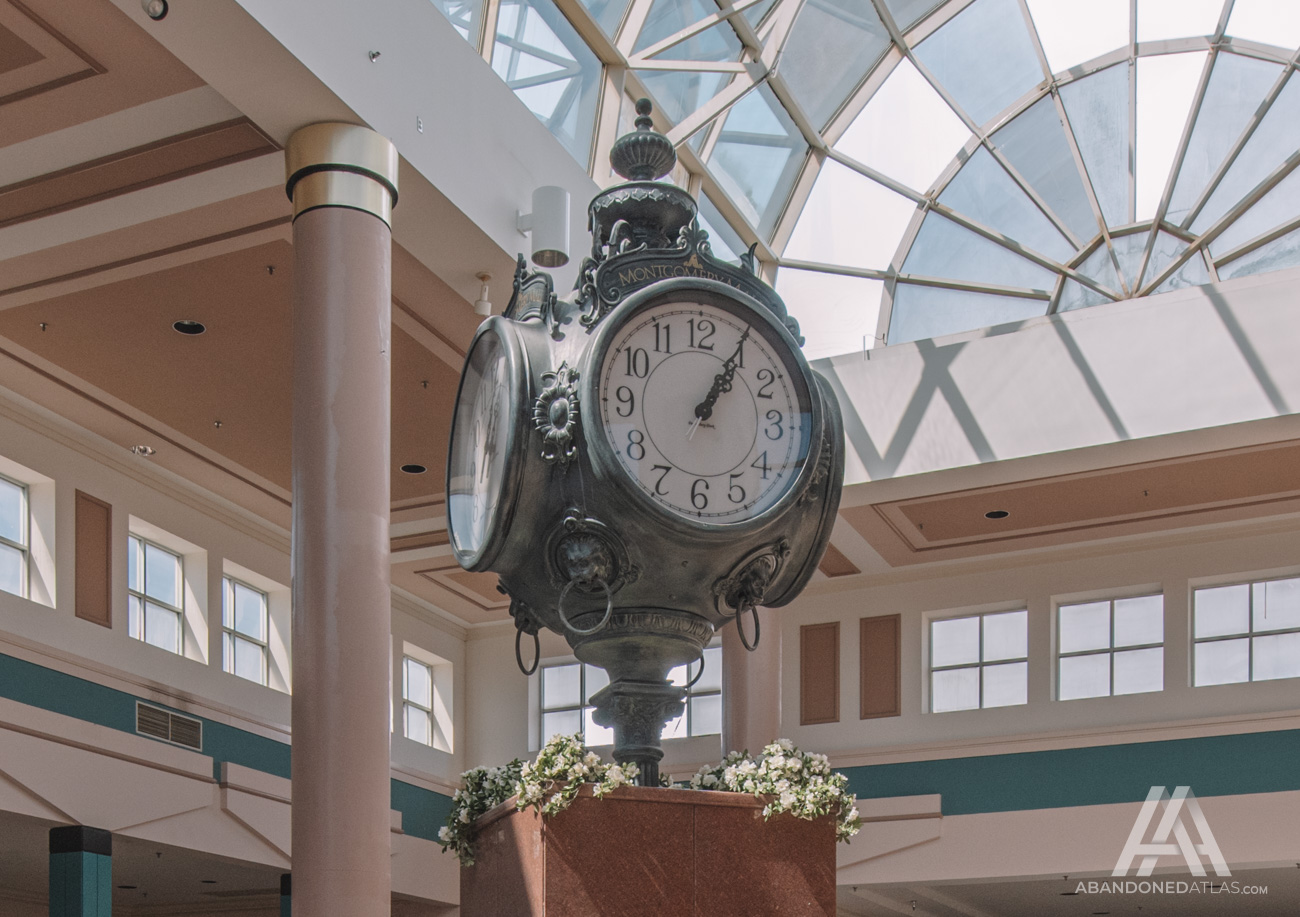
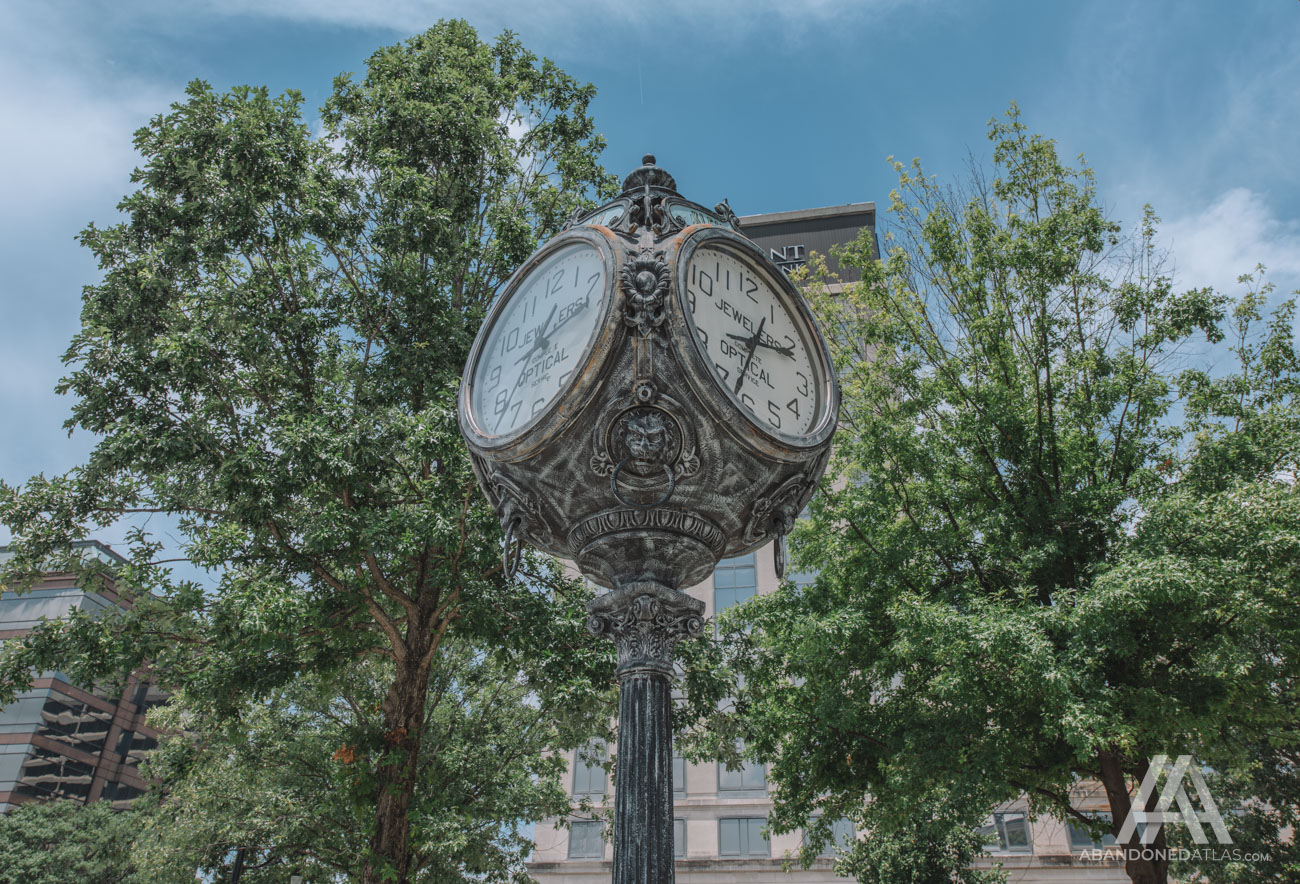
Revitalization
In May 2011, Keith Corporation revealed its plans to acquire 440,000 square feet of mall space, which included the former J. C. Penney store, with the intention of transforming it into health offices. Presently, a significant portion of the mall remains unoccupied; however, the buildings that once housed anchor stores have been sold and repurposed by the City of Montgomery and the School Board. The city made a noteworthy investment of $30 million to establish a new Public Safety/Police Precinct and Fire Station, while the Board of Education utilized the space for two separate schools: Loveless Academic Magnet Program (LAMP) High School and Montgomery Preparatory Academy for Career Technologies (MPACT).
In 2015, developers from Blue Ridge Capital, in collaboration with city and county officials, announced the next phase of the ongoing revitalization project for Montgomery Mall, which involved rebranding the complex as One Center. “There will be retail here, which we’re really excited about, as well as the food court is coming back,” said Beverly Callaway, the project director at One Center. “There will be restaurants here, places for people to eat, as well as Mayor Strange said we’re looking at a couple different companies that are looking to come in that have like 600 employees.” City leaders hold optimistic aspirations of attracting new businesses to contribute to the mall’s rejuvenation efforts.

